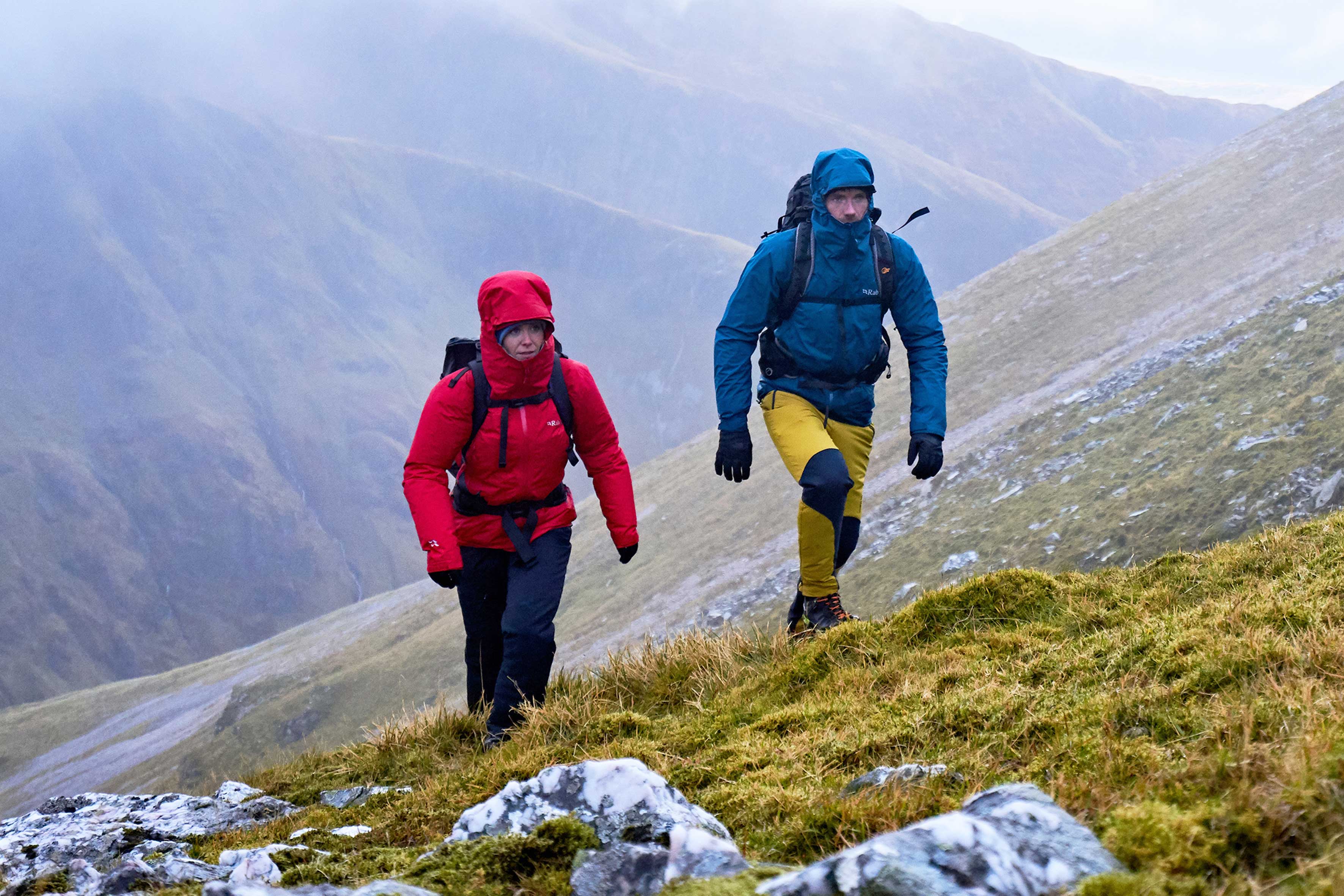10 Tips for Wet Weather Backpacking
Posted by Mark Richardson on Oct 11, 2023

#1 Take a waterproof cap
The hoods on shell jackets are generally pretty good, some have a decent peak but wearing a waterproof cap under the hood though means, the large peak keeps the rain off your face and it helps keep the hood from shifting when you turn your head.
#2 Two Bags are better than one
Check your dry bags carefully before you go, old ones eventually can leak if the seam sealing fails, and you do get the occasional puncture, better still double bag the items you need to keep dry. One solution is to use a pack liner as well as individual drybags/waterproof stuffsacks.
#3 Use a pack cover
We don’t always advocate a pack cover, they add weight and don’t actually make your pack waterproof, if you are expecting sustained rain though it’ll be worth it, rucksacks can soak up rain (some are better than others) and you have to carry that extra weight, with a waterproof pack cover most of the rain runs off. It's also easier when you get to camp if your rucksack’s substantially dry and not dripping everywhere.


#4 Take a trekking umbrella
Let's just say umbrellas aren’t for everyone and if it's windy forget it! However, they are remarkably pleasant in the right conditions, they keep the rain off and have the ultimate breathability, better than sweating inside a damp shell jacket.
#5 Dry your tent
Multi-day backpacks in wet weather are the ultimate challenge, hopefully you can put up and take your tent down between showers. It’s important to try and keep the inner tent dry but the flysheet will be soaking wet in the morning, take a small cloth that wrings out well so that you can take the worst of the water off the flysheet. You won’t get it anywhere near dry but you will remove more than shaking will do, that’s less water to carry in your pack, and if you do get a sunny spell it’ll take less time to dry your flysheet out.
#6 What to do with a wet Inner tent
If your inner tent gets wet it's not the end of the world, I’ve often set up a wet tent and set about drying the groundsheet using a small towel, you can’t get it completely dry but you can do a reasonable job. There’s no excuse for getting your sleeping mat wet so a dry mat will protect your sleeping bag from getting damp.
Some tents are pitched with the flysheet first, these have the advantage in wet conditions because it is easier to keep your inner tent dry.
#7 Take more than one towel
Modern towels aimed at backpackers are lightweight with small pack sizes, you can wring them out between wipes and so use them over and over. You will be glad you brought more than one if the weather’s wet, even a small one goes a long way. Use one and keep the other one dry until you are desperate.
#8 Choose your waterproof jacket wisely
If you are lucky enough to own more than one waterproof jacket you may have one that has burlier fabric than the other, or a higher hydrostatic head. When ultralight backpacking you need to understand the environment you are hiking in to, ultralight waterproofs fit with a lot of situations but they are vulnerable at the shoulders when carrying a backpacking load because it applies pressure to the rain water forcing it through the fabric. If I am expecting sustained wet weather I choose a waterproof that will perform the best in this respect.
#8a – It’s a good idea to wash and/or reproof your raingear before you set out, most waterproof membranes required regular washing in order to maximise their breathability.


#9 Be An adult
Always keep a set of clothes dry to change into when you’re in the tent, so, unless it’s your last day out on the hills be an adult and put your damp clothes back on from the day before, its crap to start with but you’ll soon warm up when you get moving again.
#10 Overpack food that doesn’t need cooking
In severe weather it may not be possible to get something cooked, be sure you have more than your usual alternatives in the form of bars, cheese, crackers or whatever floats your boat.

|
||
 |
||
|
Mark Richardson |
||
|
Mark was the founder of Ultralight Outdoor Gear back in 2006 and has completed long distance backpacking routes in some of the remotest parts of the world. His favourite hikes have been Torres del Paine (full circuit), the John Muir trail and the Markha Valley trail (Ladakh, India). Although semi-retired Mark has not lost any enthusiasm for minimalist backpacking and is tackling Scotland’s Munros choosing multi-day backpacking routes over the more usual guide book excursions. |
||
#1 Take a Waterproof Cap: The hoods on shell jackets are generally pretty good, some have a decent peak but the lighter weight ones can be poor in this respect. None of them can beat wearing a waterproof cap under the hood though, the large peak keeps the rain off your face and it helps keep the hood from shifting when you turn your head. #2 Two bags are better than one: Check your dry bags carefully before you go, old ones eventually can leak if the seam sealing fails.
